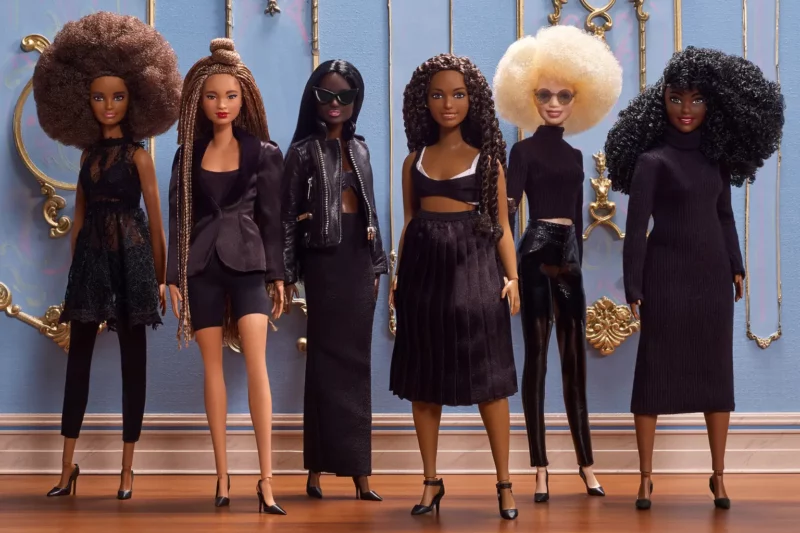For generations, Black Barbie has been a symbol of power, upward mobility and imagination
Share
Explore Our Galleries
Breaking News!
Today's news and culture by Black and other reporters in the Black and mainstream media.
Ways to Support ABHM?
By Joyann Jeffrey, From NBC in cooperation with TODAY
Black Barbies are still teaching fans of all ages a very important lesson.

Angela Williams, a Black writer in her 40s, remembers getting her first Black Barbie doll like it was yesterday.
“My first Black Barbie came as a hand me down from one of my sisters. I have three older sisters and I think I was probably six or seven years old when I got it,” she tells TODAY.com.
Although the doll was missing some accessories due to her sisters’ lack of consideration for the toy, Angela Williams said she still loved the doll like no other. […]
The doll mirrored some of Angela Williams’ features, sporting preppy dark hair, a “simple” blue dress and dark skin. But, the best part about the toy was how the doll could come to life by simply using your imagination.
“You know how there’s one person in the group of friends that always tends to lead the pack and they have the ideas and everybody wants to be with them because they’re so cool. That was my Barbie,” she said.
“She was almost like the queen of the core because she stood out and she was different,” the journalist adds.
Having only played with white dolls before, a young Angela Williams knew exactly what she wanted to do with her new friend.
First, she built a home for her Barbie using boxes that were found around the house, and when her doll would take a walk through her made-up town, she said, “Everybody would be happy to see her” because of the way she “strutted” her stuff.
“Everybody kind of looked up to her. So I guess for me, I made my Barbie like the very special person that I thought I should be,” she said.
‘She’s black! She’s beautiful! She’s dynamite!’
The type of inspiration that Angela Williams received from playing with her doll was unlikely unheard of for Black girls in 1959. That year, Barbie made her debut at toy stores and the fashionista came equipped with platinum blonde hair and piercing blue eyes. While it seemed little white girls could imagine their future with the “country’s first mass-marketed adult-looking doll for girls,” according to The New York Times, it was hard for children of color to do the same.
It wasn’t until 1967 that Mattel, the company that manufactures Barbie, made its first dark-skinned doll.
Her name was Francie and she came with a cool twist-and-turn feature in her waist that made her even more fun to play with. But while she seemed to promote inclusivity in the toy industry, along with Christie, a more popular Black doll that came out a year after her, none of them were actually seen as Black Barbie dolls.
According to the Independent, Francie and Christie were part of “several Black dolls” that Mattel released as Barbie’s friends. Though they lived in the icon’s plastic world, they were just a shadow of existence compared to Barbie.
Black girls would have to wait at least 10 more years before the first official Black Barbie doll would hit the market.
Read more about the importance of representation in the toy industry in the original article.
Check out this Breaking News article’s story about the inclusion of Black culture in the Barbie universe.
Find even more Breaking News here.









Comments Are Welcome
Note: We moderate submissions in order to create a space for meaningful dialogue, a space where museum visitors – adults and youth –– can exchange informed, thoughtful, and relevant comments that add value to our exhibits.
Racial slurs, personal attacks, obscenity, profanity, and SHOUTING do not meet the above standard. Such comments are posted in the exhibit Hateful Speech. Commercial promotions, impersonations, and incoherent comments likewise fail to meet our goals, so will not be posted. Submissions longer than 120 words will be shortened.
See our full Comments Policy here.